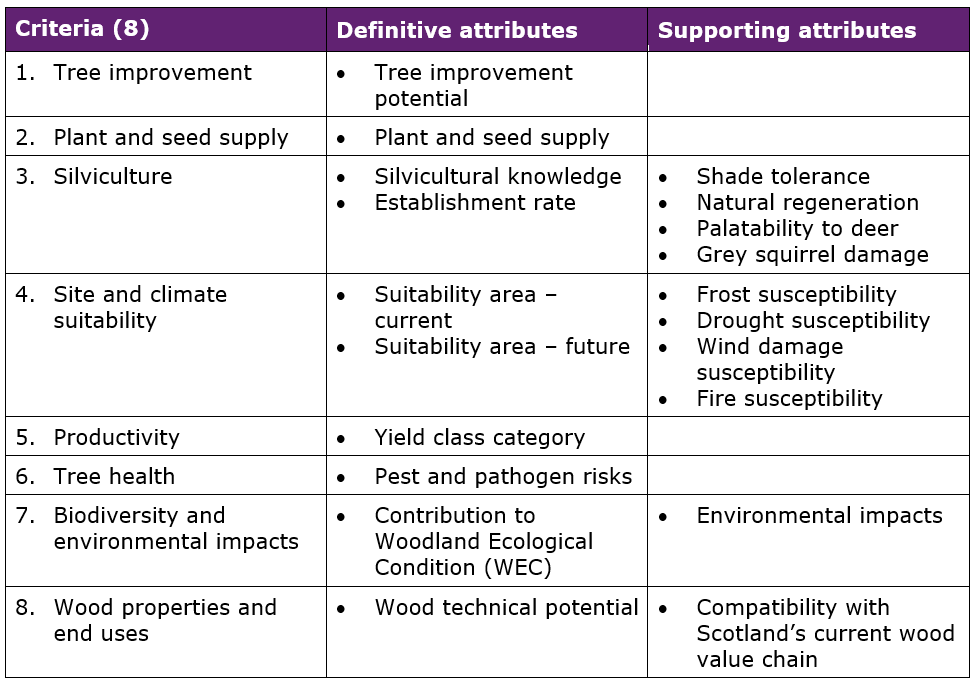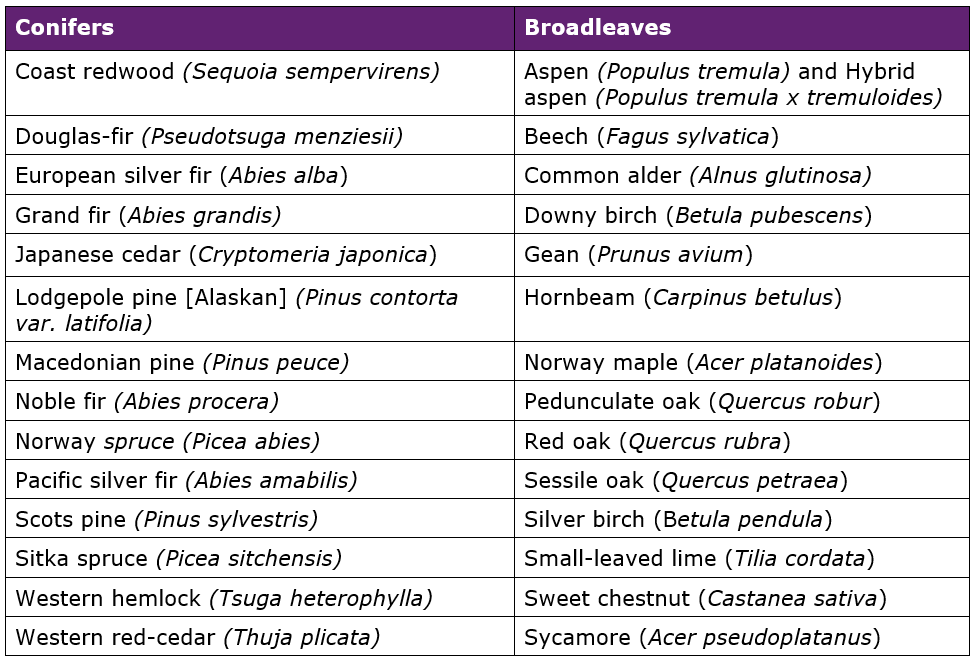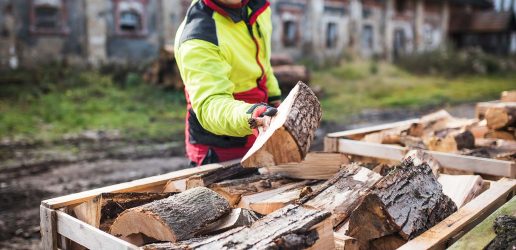There can be few people involved in UK forestry who aren’t aware of our reliance on a limited range of productive species, mainly spruce, making us particularly vulnerable to the risks associated with pests and diseases and a changing climate.
We need to diversify our forests and increase their resilience, while maintaining the supply of wood and other benefits they provide.
If we are to meet this challenge, we need to coordinate our actions – and focus our efforts on an agreed shortlist of the best performing species suited to both current and future conditions.
With this in mind, Scottish Forestry commissioned Forest Research in January 2024 to assemble the scientific evidence required to select such a shortlist for Scotland. After a long period of evidence gathering, analysis, and consultation, the shortlist of 28 species (14 conifers and 14 broadleaves) was signed off by the Adaptation and Resilience Steering Group set up by Scottish Forestry and published in September 2025 along with our final report Selecting a shortlist of tree species for diversification and resilience – Forest Research.
The shortlist delivers a priority action in Scotland’s new Routemap to Resilience [New tree species list aims to future-proof Scotland’s forests]. It helps us prioritise investment in research and development, for example in tree improvement, nursery practice, silviculture and wood properties research, and product development. It provides direction and guidance on species choice to seed collectors, nursery managers and foresters. It helps us work towards the critical mass of productive woodland required for processors to invest in alternatives to spruce.
Similar work has now been commissioned for England by Defra, and we are in discussions with Welsh Government over a proposal to help select a shortlist for Wales. Many of the actions that follow from the shortlists in each country would benefit from dialogue and coordination at UK level. This will be one of the tasks of the new UK Forest Genetic Resources (UKFGR) Group, chaired by Geraint Richards, Head Forester of the Duchy of Cornwall, with representatives from organisations across UK.
How we selected the shortlist
We started by agreeing a longlist of 64 candidate species and then we evaluated them using eight criteria. The criteria were identified via a workshop held in September 2023 with around 50 industry stakeholders. A team of 35 researchers from across Forest Research, plus Edinburgh Napier University, then assembled the necessary data from the existing literature and active research, supplemented with expert judgement. Each criterion was represented by one or more ‘definitive attributes’, and in most cases also by one or more ‘supporting attributes’ as shown in Table 1.
The data for the 10 definitive attributes were converted into scores and assembled in a matrix. This allowed us to use multi-criteria analysis to explore the effects of changing the weighting of each attribute on the overall ranking of species. We held a second workshop in May 2024 where participants were asked what they thought the weightings should be. We soon realised that no single set of weightings would produce a shortlist that felt exactly right; it would be necessary to refine and finalise the list through consultation with experts and stakeholders. We also realised that the quantitative data alone wouldn’t capture all the nuances necessary to make the right choices, so we prepared a narrative for each species to interpret and summarise the data and provide the rationale for whether it should be included in the shortlist.
Table 1. Criteria, definitive attributes and supporting attributes

The consultation comprised a series of meetings between January and July 2025 with seed collectors, nursery managers, foresters, environmentalists, and timber processors. Together we examined the evidence and revised the shortlist through an iterative process until a consensus was reached. Nine species were ruled out from the start, because the tree health risks were considered too high for the species to be promoted at scale.
Shortlist of productive species for Scotland
The resulting shortlist is shown in Table 2. It’s important to stress that the list is intended for strategic purposes; exclusion from the shortlist does not mean a species should not be planted, which remains the decision of the land manager. Also, the composition of the shortlist should not be seen as permanent and will be subject to review to allow revisions in response to new evidence and changing circumstances.
A key objective was to ensure we selected a palette of species suited to a range of silvicultural systems, climatic regions and site types across Scotland, providing wood for a range of markets. We believe we achieved this goal as far as possible given current levels of knowledge and the limitations posed by Scotland’s climate and land available for forestry.
Final thoughts
We believe this project has been the most comprehensive assessment of its kind conducted in UK to date. Importantly it wasn’t just about selecting a shortlist – it was about taking stock of the available knowledge of the candidate species and identifying critical evidence gaps we need to address. We’ll also develop the evaluation framework into a tool to support species choice, knowledge exchange, education and training.
Some experienced foresters might look at the shortlist and think there are no big surprises. But the exercise highlighted the risk of promoting any species at national scale if we know little about its performance in a UK context. Even the best performing species have substantial evidence gaps, which can now be prioritised for research.
Table 2. Shortlist of productive species for Scotland (listed alphabetically)

I would like to thank the numerous research colleagues and consultees who gave their time to ensure the project was a success. Also, I’d like to acknowledge Helen Sellars and Tim Gordon-Roberts at Scottish Forestry who conceived and commissioned the project and worked closely with us from the start to ensure the approach and outputs were fit for purpose. From my point of view as a social scientist, the project was especially rewarding because it demonstrated the value of ‘co-design’ with policymakers and practitioners to help ensure our research has a real-world impact on the future resilience of our forests.
Recent News
View All news
New guide to help local authorities conduct a people survey on the social value of their treescapes
A new step by step guide to help local authorities, charities and civic societies carry out a people survey to understand social and cultural values related to trees in their area, is now available.

What effect do ammonia emissions have on surrounding trees and soil?
Ammonia absorbing tree-belts lead to ecosystem trade-offs – increased nitrogen and carbon capture but reduced microbe diversity in soil – suggests new research.

New guide to help local authorities conduct a people survey on the social value of their treescapes
A new step by step guide to help local authorities, charities and civic societies carry out a people survey to understand social and cultural values related to trees in their area, is now available.

What effect do ammonia emissions have on surrounding trees and soil?
Ammonia absorbing tree-belts lead to ecosystem trade-offs – increased nitrogen and carbon capture but reduced microbe diversity in soil – suggests new research.



